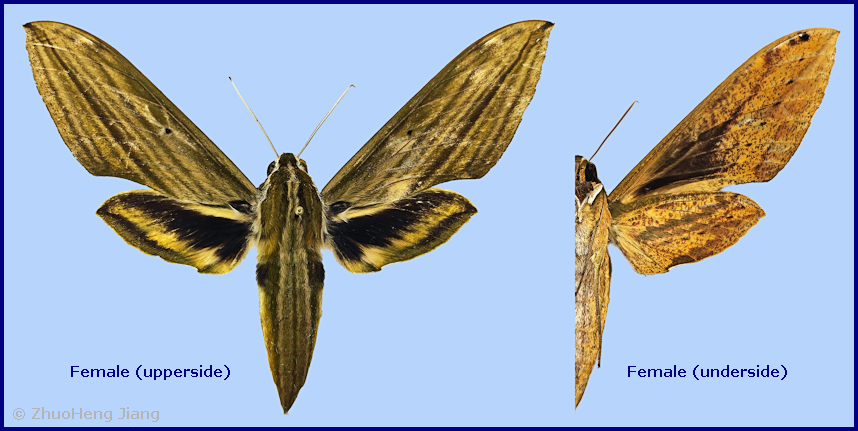
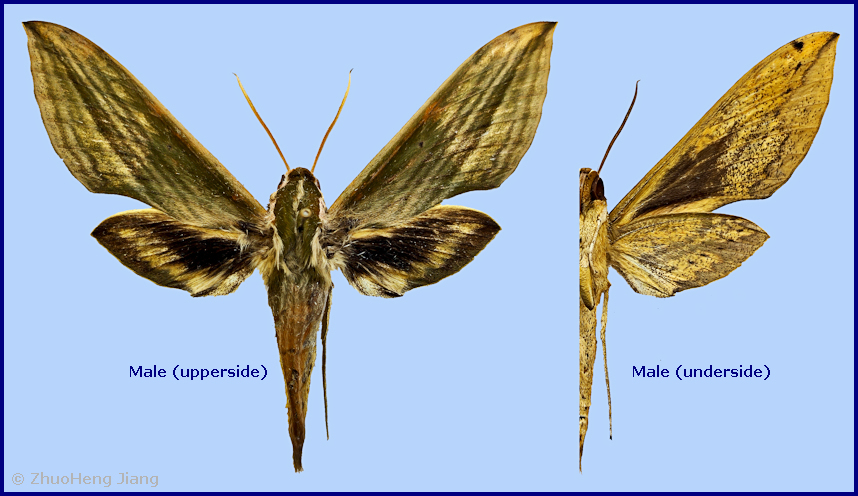
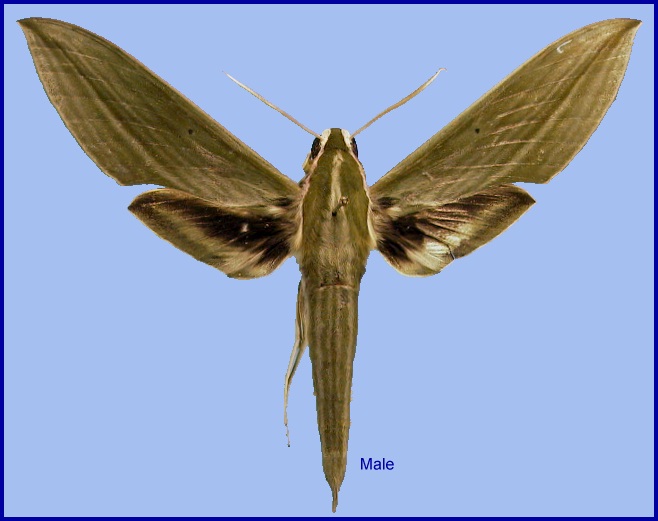
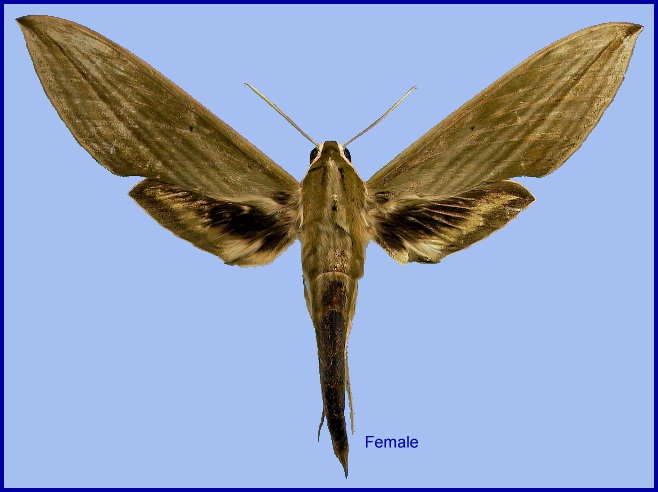
Cechenena subangustata Rothschild, 1920, Ann. Mag. nat. Hist. (9) 5: 482. Type locality: [Indonesia,] Sumatra [Sumatera], Benkoelen District [Bengkulu], Lebong Tandai.
Synonym. Cechenena subangustata Rothschild, 1920.
Synonym. Cechetra subangustata continentalis Ivshin & Krutov, 2018.
Note: Ivshin & Krutov (2018) state that Cechetra subangustata continentalis is as large as the nominotypical subspecies, but has a more uniformly green forewing upperside ground colour and, consequently, a less contrasting pattern of stripes. [Unfortunately, the green forewing colour fades rapidly with age and, consequently, leads to a reduction in contrast in the forewing patterns over time.] Analysis of mtDNA did not reveal any significant difference between the new and the nominotypical subspecies. The male genitalia differ from those of the nominotypical subspecies in the distal hook-like process of the phallus armature having 1 to 3 small teeth apically and/or on its upperside, and a slightly less angular harpe. These differences are too small and/or ephemeral to warrent subspecific status.
This species has been confused with Cechetra lineosa (Walker, 1856), but, according to Inoue (1990), can be separated by the following: larger; in fresh specimens forewing green all over (in Cechetra lineosa the green area is confined to costal and subterminal areas); hindwing underside blackish basal area broader and wider; both wings more yellowish (less orange-beige) below. In the male genitalia, harpe much thicker than in Cechetra lineosa, with serrate apical flap of phallus transversely wide and narrow. In the female genitalia, sigum slenderer and longer than in Cechetra lineosa.
Individuals from Indonesia (Borneo, Sumatra) and Peninsular Malaysia are, on average, larger than Taiwanese ones.
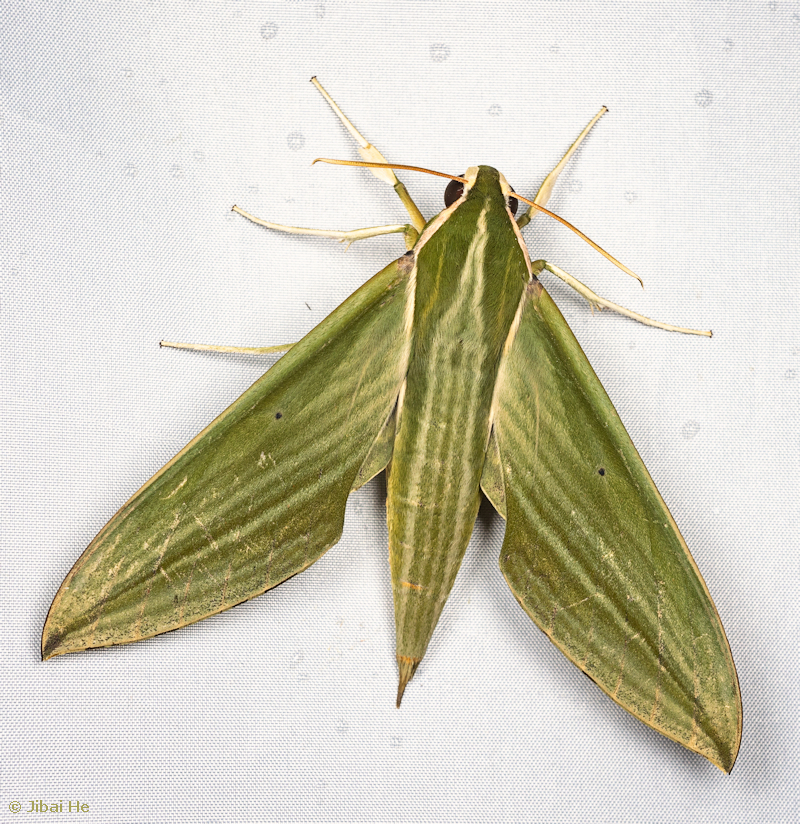
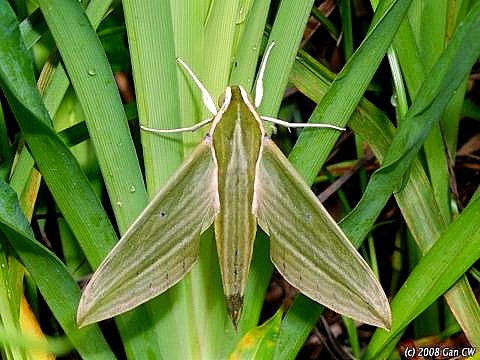
In Taiwan, a species of the montane forest zones from 400-2400m (Fu, Ronkay & Lin, 2013)
China: 15.iii (Yunnan); 12-13.vi (Yunnan); 31.vii (Yunnan). Taiwan: iv (Yilan Hsien); v (Nantou Hsien); vii (Taichung Hsien); viii (Chiayi Hsien; Taichung Hsien; Kaohsiung Hsien); ix-xi (Nantou Hsien).
OVUM: Unknown.
LARVA: Unknown.
PUPA: Unknown.
Larval hostplants. Unknown.
China: Yunnan (Xima, nr. Yingjiang, 2080m; Gaoligong Shan; Liuku/Lushui, Nujiang Lisu Autonomous Prefecture; Deqing/Dêqên); Guangxi; Hainan (Wuzhishan).
Taiwan: Taipei Hsien (Fushan); Taichung Hsien (Kukuan; Lishan); Chiayi Hsien (Alishan); Hualien Hsien (Chian, 1950m); Yilan Hsien (Qilan, 700m); Nantou Hsien (Meifeng, 2100m; Wushe); Kaohsiung Hsien (Tengzhi, 1550m); Taitung Hsien (Taitung).
In Taiwan this species is much rarer than Cechetra lineosa (Inoue, 1990).
Nepal, Bhutan (Norbu et al., 2022), northeast India, Thailand, southwestern China, Taiwan, Vietnam, Malaysia (Peninsular, Sarawak), Indonesia (Sumatra, Java, Kalimantan).
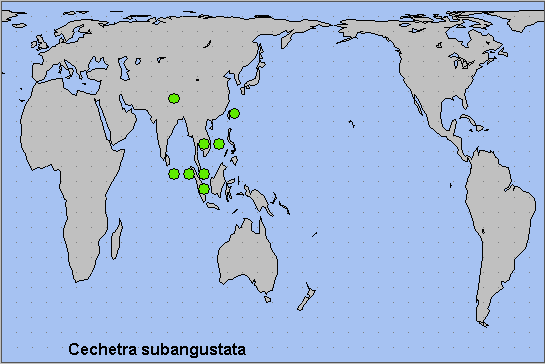
 Return to Sphingidae of the Eastern Palaearctic species list
Return to Sphingidae of the Eastern Palaearctic species list